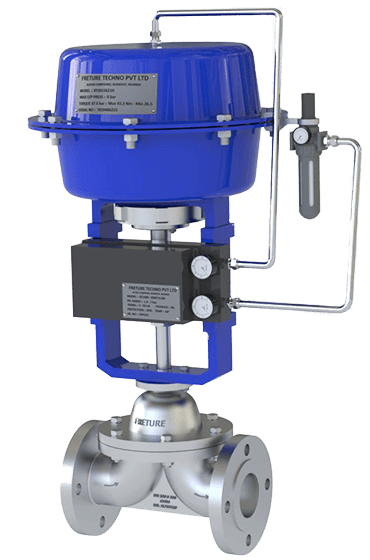Control valves play a critical role in regulating fluid flow in industrial applications. Among various control valve types, diaphragm-operated valves are widely used due to their precise control, reliability, and leak-proof design. One of the key mechanisms behind their operation is the use of air pressure to lift the diaphragm, enabling smooth and accurate fluid flow regulation. But how does this process work? Let's dive deeper into the science and engineering behind it.
Understanding the Role of Air Pressure in a Control Valve
A pneumatic control valve utilizes compressed air to manipulate the diaphragm's position, thereby controlling the fluid flow through the valve. The system consists of three essential components:
Actuator – Converts air pressure into mechanical movement.
Diaphragm – A flexible membrane that moves up or down based on air pressure.
Valve Body – The main housing where fluid regulation occurs.
When air pressure is applied to the actuator, it exerts force on the diaphragm, causing it to lift or push downward, depending on the valve's design. This movement adjusts the flow path, enabling precise regulation of fluid.
How Air Pressure Lifts the Diaphragm
The lifting of the diaphragm in a control valve is based on the force balance principle. Here's how it works:
Air pressure is supplied to the upper chamber of the actuator, exerting force on the diaphragm.
The force overcomes the opposing spring force or system pressure acting in the opposite direction.
As the diaphragm lifts, it opens the valve, allowing fluid to pass through.
When the air supply is reduced or stopped, the spring force or system pressure pushes the diaphragm back to its original position, closing or restricting flow.
This mechanism ensures accurate proportional control, making it ideal for applications requiring fine-tuned flow adjustments.
Factors Affecting the Lifting Mechanism
Several factors influence how effectively air pressure can lift the diaphragm in a control valve:
Diaphragm Material: Flexible and durable materials such as EPDM, PTFE, or reinforced rubber ensure efficient movement.
Spring Force: The opposing spring strength determines how much air pressure is needed to overcome resistance.
Supply Air Pressure: Higher air pressure results in stronger lifting force, but excessive pressure can cause damage.
Valve Size and Design: Larger valves require greater force, which may need higher air pressure or a larger actuator.
Advantages of Pneumatic Control in Diaphragm Valves
Fast and Precise Control: Air pressure adjustments provide immediate response, ensuring accurate fluid regulation.
Energy Efficient: Uses compressed air rather than electrical power, making it ideal for hazardous environments.
Leak-Proof Operation: The diaphragm creates a hermetic seal, preventing fluid leakage.
Durability and Low Maintenance: Fewer moving parts reduce wear and tear, extending service life.
Applications of Air-Operated Diaphragm Valves
Industries that require precise flow control and contamination-free operation rely heavily on diaphragm control valves, including:
Pharmaceutical Industry: Used in sterile applications to regulate fluid transfer.
Water Treatment Plants: Controls flow in chemical dosing and filtration processes.
Food & Beverage Processing: Ensures hygienic fluid handling in production lines.
Chemical Processing: Handles aggressive and corrosive fluids with precision.
Conclusion
The ability of air pressure to lift the diaphragm in a control valve is a combination of force balance, diaphragm flexibility, and actuator efficiency. By understanding this mechanism, industries can optimize their fluid control processes, ensuring reliable and precise operations. Pneumatic diaphragm valves continue to be a preferred choice for automation, efficiency, and precision in fluid control applications worldwide.

No comments:
Post a Comment